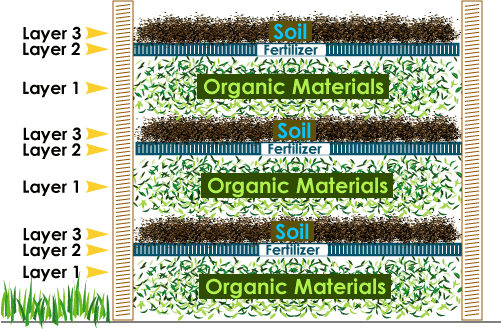| Back to Back Issues Page | |||||||
 |
|||||||
|
[Tomato Dirt] How to Get Started Composting for Tomatoes October 11, 2012 |
|||||||
Tomato Dirt Newsletter
|
 |
Image: University of Illinois Extension |
What you need to make compost
Successful composting requires four components: food, water, air, and heat. These raw materials and environmental factors combine to facilitate the process.
Food
Organic matter provides the fuel to create compost. The right mixture includes two primary materials, simply referred to as “greens” and “browns.” These designations don’t necessarily refer to the actual color of the composting material. Rather, green materials (grass clippings, weeds, and kitchen scraps for example) are high in nitrogen, while brown materials (dried leaves, straw, and dry grass) are high in carbon.
Water
Set your compost pile in an area with good drainage so that it can receive moisture but will avoid accumulating excess water.
Air
Aerobic microorganisms in your compost pile need air to survive and to continue their work of breaking down organic matter. Turning opens up air pockets in the pile. By “turning” your compost pile, you help microorganisms on the outside of the pile move into the middle, where there is more heat.
Heat
Organic matter decomposes the quickest between 140ºF - 160ºF. Some breakdown will occur as long as the internal compost temperature is above freezing. Compost is self-insulating. When you pile compost on top of compost, the middle of the pile will be the warmest.
Get all the details about getting started with composting for tomatoes when you read the full article here.
Halloween is coming! Make or buy a tomato costume
 |
You can make a tomato costume easily out of a red sweat suit, poly fil batting, and green felt. Get all the instructions here … or you can also order a ready-made tomato costume for a toddler, child, or adult, too!
More on fall in the tomato garden …
| How to save tomato seeds to plant next year | How to grow indoor tomatoes | Tomato grow lights explained | Fall Tomato Garden Clean Up |
|---|
Get special fall deals and coupons for your garden!

That’s it for now. More next time!
Until then, happy gardening!
![]()
Kathy with Tomato Dirt
www.tomatodirt.com
Find us on Facebook!
